If you’re among those who don’t know what Pioneers Park in Belgrade is, you might be led to think that it is somehow related to Pioneers Town in Košutnjak, the Home of Pioneers or the Youth center. To those of us who grew behind the Iron Curtain, it only seemed natural that Pioneers should have their parks and settlements, and then when they grow up a bit, they move to youth and student homes, towers and cities. Well, at least it did to this author’s underage logic. None of those places are related, apart from the fact that they were named after the offspring. It was a common practice after the liberation. The once new, Socialist state was determined to invest into younger generations, and spared no effort in emphasizing this attitude.
Although the last generation of Yugoslav pioneers is well in its mid-thirties, as the children of Belgrade had always been the Park’s most faithful visitors, the former state’s youth movement epithet still seems appropriate.
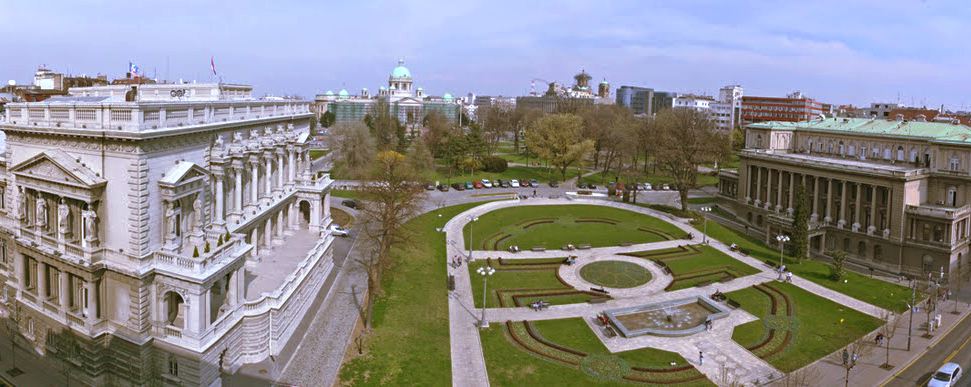
There is probably no other park in Belgrade that is involved as much in the city’s hustle and bustle as Pioneers Park is. Automobiles circle around it incessantly, while thousands of pedestrians cross its paths on a daily basis. Although it’s one of the busiest and oldest green areas, we take it for granted most of the time. The majority of passers by almost never stop in it. It’s regarded transient – a temporary stop before the next bus arrives, or a place of meeting. Pioneers park, however, has a feature, which was the initial reason for its creation and that is to be a safe haven, a place to relax and a temporary resort, away from the throng which lurks just around the corner. It’s almost magical, how the few mighty trees, the trickle of water and a few trimmed bushes, can soothe the heart and silence the noise.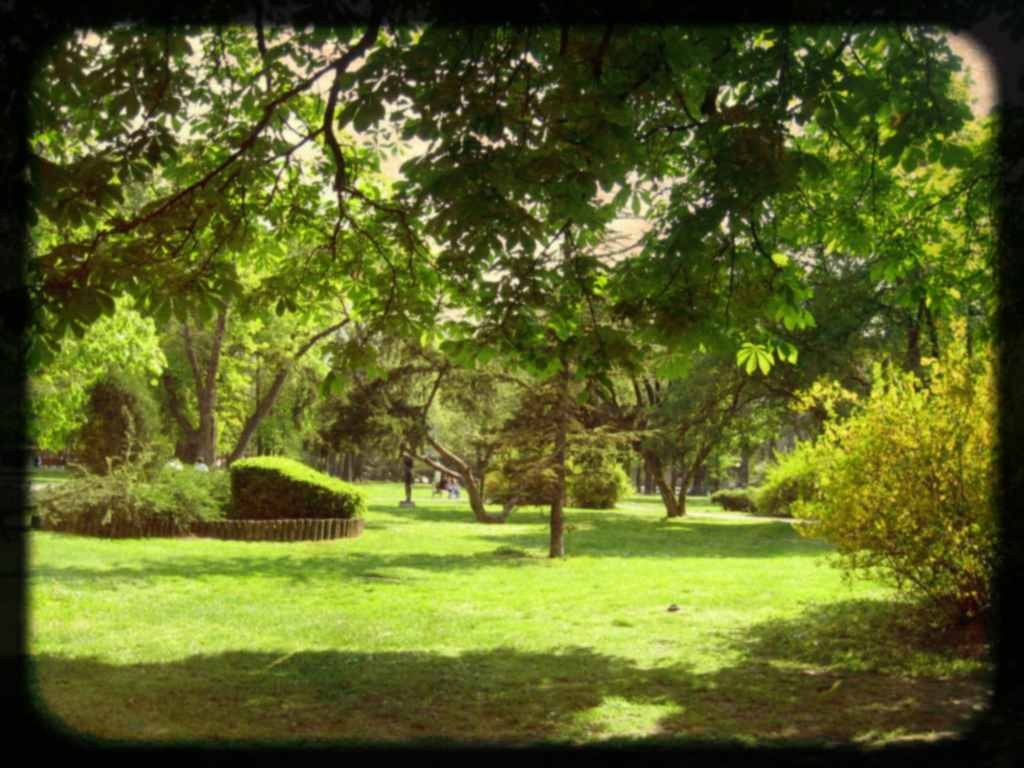
Mosquitoes, Belgrade’s Oldest Residents
(The Begginings of the Pioneers Park)
The early history of this green oasis is actually not that elegant. Areas which surround large rivers (which Belgrade essentially is) are usually filled with marshes and swamps, and among them the inevitable mosquitoes. The first residents of Belgrade were the storks and mosquitoes, and everyone else came afterwards (dinosaurs were scarce in this area, as Serbia was underwater at the time – or so the scientists say). In the meantime, the storks have fled the growing urban chaos, but mosquitoes still seem hesitant to follow suit.
All of the main urban neighbourhoods in Belgrade share a common characteristic. Till the 1830s most of what is today the center of the city, was a barren field with ponds, undergrowth and insects. Pioneers Park is no different in that respect. A wealthy trader and politician, Stojan Simich bought the parcel, far from town, on a glade behind Terazije and built a luxurious villa on it. Just a few years later, in 1843, the house was bought and inhabited by the Karadyordyevich family – the first royal family in Serbia after the Turkish rule. The transaction meant the inception of landscape architecture in the Royal Garden and its surroundings. The concept and the outward appearance of the park and its surrounding objects had been changing quite a bit in the following decades, up until the Second World War. From then on, its form was pretty much stapled to what it is today. As was the case with many properties after the war, the park has also been liberated from its rightful owners, and during the fifties, the Royal fence and gates were demolished, and the Pioneers Park was “finally returned to the people” for use.
Coffee at the President’s
(A bit more on history of Pioneers Park)
Pioneers Park is perhaps one of the most central parks in the city center. Given its position, many popular places and important institutions surround it. The long list includes the central Post Office, Musical School Stankovic, Turkish Embassy, Hotel Excelsior, Ivo Andrich’s Museum, Tuckwood multiplex cinema, and the slightly less proximal Building of the Parliament, the Hall of the Syndicates and the Historical Museum of Serbia.

The south entrance to the park is from Andric Venac, next to the Presidential seat of Serbia. Belgraders have never really stopped calling it the New Palace, which it indeed was, but not for long. Built in the period between 1911 and 1922 as the last adjunct to the court complex. The area it occupies today was the place of the Old Palace of the Obrenovich Dynasty and then the Ministry of Foreign Affairs. Its shared the fate of all other Royal residences when the dynasties exchanged power.
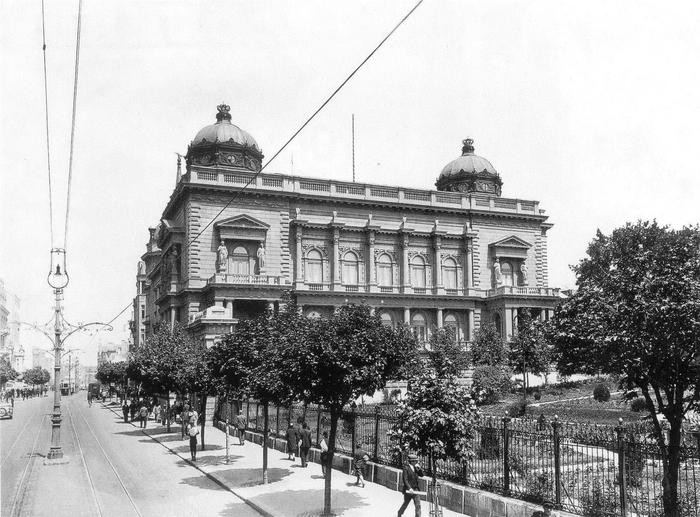
The court complex has been conceptualized consisting of three elements- the two court houses on the left and the right (as they’re seen from King Milan’s street and one central building interconnecting them.
The plans were not completed during Obrenovich reign, mostly due to the political instability and the lack of funds, so the whole concept of the court complex changed constantly depending on the needs of the :tenants”. The Karadyordyevich’s, wanted a different Court (with a certain animosity to Miichael’s one) and the architect Stojan Titelbah designed the building in beaux-art style, maintaining the style of the Old Court – its first door neighbor. Just 11 years after the building was completed, the Royal family moved to the White Court in Dedinje, while Titelbach’s building becomes a Royal musem, and soon after the Museum of King Paul. Since he was a fairly emancipated and well educated man, King Paul wanted to provide Belgrade with a modern museum. It contained various archaeological and medieval items, as well as the works of classical and modern art, and it was one of the finest contemporary museums of its time. After the second world war, the building became the seat of the President of the Socialist Federative Republic of Yugoslavia, and up to this day it has been hosting the the president’s office of all the latter states.
In the mayor’s yard
(The Architecture in Pioneers Park and the last bit on its history)
If you’d continue walking up the path, which is usually treaded by the president, politicians and their guests, you would run into the Old Court, or the City Hall. Many of us are unaware that the cobblestone path used to be occupied by yet another marvelous building, the Marchalate of the Kings Court. It survived both Nazi and Allied carpet bombings in the 1940s, but was not so fortunate with the Communists. After the war, the building was demolished. Some say it hindered the view over the Assembly Building (present day Parliament), which seems a like a pretty lame excuse.
The Old court was made by Aleksandar Bugarski – another great architect at the outset of modern day Serbia. The building was supposed to (and to an extent succeeded in) reflecting the splendor and the mentality of the Serbian elite of the times, as well as their strong inclination towards Europe. At the same time it was quite extraordinary to have an administrative building of such magnitude in a town that was just a decade ago, a Turkish casbah.
The building was erected in 1884, as King Milan’s royal residence, who decided to abdicate in favour of his underage son Alexander at that very spot. It is unclear however, which members of the Obrenovic family slept there to begin with. It can be easily deduced from the available data that they spent most of their days (until the coup) in the building of the Old Konak, which was on the spot where the lawn between the two court buildings is today. This residence, was Simich’s house, (the guy from the beginning of the text) and it served as a royal residence since 1843 and the reign of Alexander Karadjordjevich.
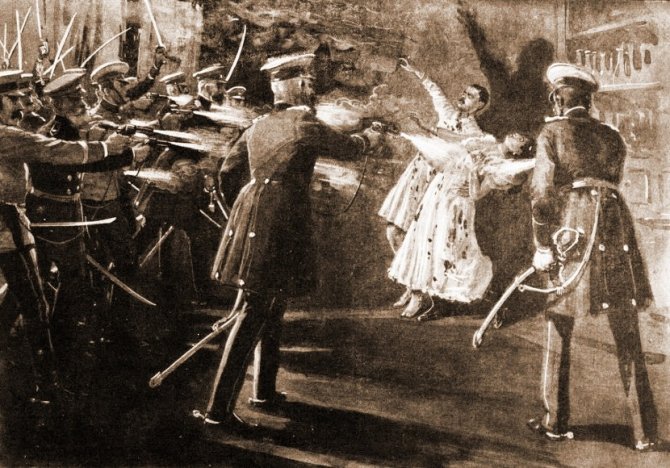
The old residence was the place where May Coup (1903) took place. The ill fate had caught the young king Alexander in his bedroom, where he was brutally assassinated together with his wife Draga Mašin.and thrown of the terrace. Whether because the authorities have changed or because the royal garden needed refurbishing, Simich’s house was soon after demolished and together with whatever was left of the Obrenovish dynasty.
The importance of the Old Court for Belgrade and its inhabitants remained high in the decades that nsued. Till the second world war it was mainly used for state parties and receptions and for a short while also as the National Assembly. As it was heavily damaged at the outset of the Second world War, it was thoroughly renovated after the war and then served a number of different purposes in the new homeland. Since 1961 it has hosted the assembly of the city of Belgrade and the Mayor’s office.
People cheer while flowers weep
(Present day traditions of Pioneers Park)
In the past two decades, the balcony of the Old Court has been used as a place of greeting of the winning national sports teams. The tradition kicked off spontaneously, when the basketball team of the smaller Yugoslavia, came back home with a gold medal from the European championship in 1995. As it was the first great international victory of the team after quite a few years of hardship for local sports and athletes, the enthralled mass had gathered unexpectedly all over the city center to greet the champs. The players came out on the balcony of the City Hall and addressed the nation. Such gatherings have become a steadfast tradition, and a recurring nightmare of the Public Greenery Enterprise. As the grass is victim to a repeated spontaneous herbicide, each morning after massive gatherings, the workers of the public enterprise have to revive the mutilated flora on the flower plateau in front of the Mayor’s Hall. Those in charge have been trying to fence off and protect the plants on such occasions. They often succeed, but when the number of people outgrows the free standing space underneath the balcony, the fate of flowers is sealed.
Cementary is the ground we tread on
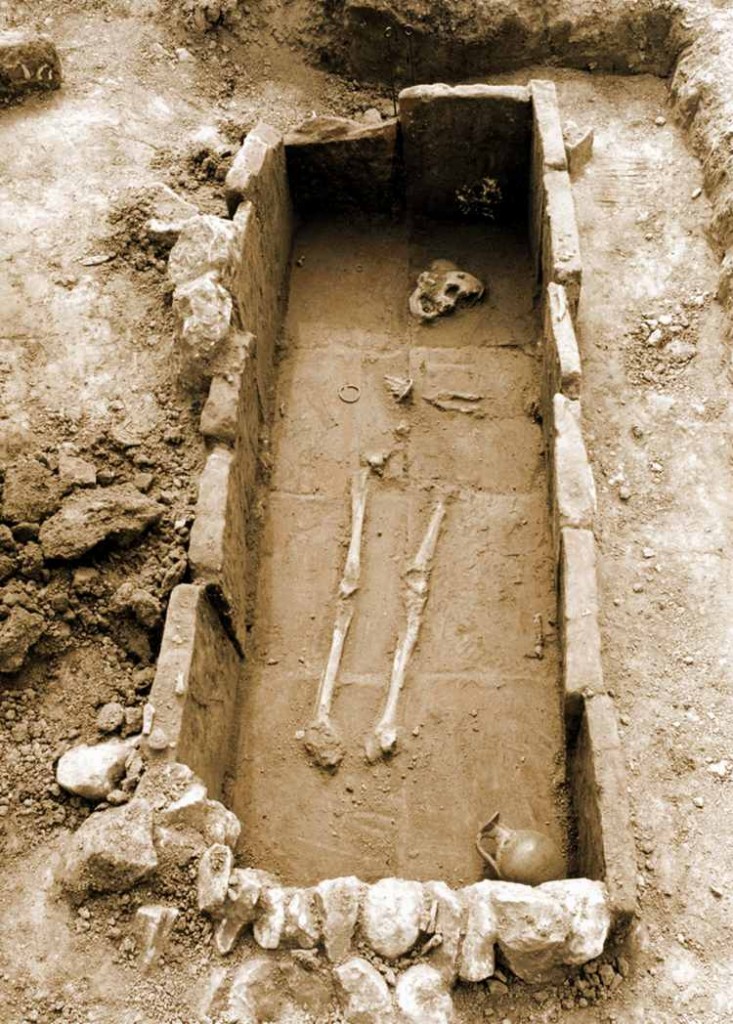
As we stand on the flowery plateau, underneath us is one of the largest public garages in Belgrade. Its construction was completed in 2005 and it can park 460 vehicles on 3 underground floors. It happens to be one of the busiest garages in the daytime. To say that building it was a demanding civil engineering feat would be an understatement, but to us, it is actually the previous contents that were there that are interesting. Belgrade’s inhabited history is a fairly long one. The available archaeological data has more or less anticipated what was to be found in the parks underground. During the preparatory stage of the construction, the crews of archaeologists have conducted research and discovered 19 Roman graves and a stone sarcophagus,. The findings have confirmed that the locality of Pioneers Park used to be a part of the south east necropolis of the ancient Singidunum, which is really a euphemism for another antique cemetery. It is certain that during the third and fourth century, if not even earlier, the space underneath todays park was a place of burial. The burial rites of the time meant that the departed were put to eternal rest together with their belongings. During research, many artifacts of Roman origin were found in the area, including jewelery and everyday objects. Some of them were put on display at the garage’s entrance in Dragoslav Jovanovic street.

Speaking of Roman cemeteries, it is unlikely that the superstitious among the readers would appreciate the following macabre data. Namely, the graves underneath Pioneers Park are just a part of a complex of antique necropolis, scattered all over Belgrade. It is certain that a large number of tombs is just underneath the city asphalt. The first big burial ground is underneath Pop Lukina, Brankova and Zeleni Venac. The second, and slightly bigger is on space spanning from Kalemegdan to Republic Square, and the third spans from the Republic Square, via Dechanska and King Alexander’s Boulevard all the way down to Vuk’s Monument
A piece of Macedonia
Treading down the paths of dead Serbian Kings and Roman legionaries, via Nikola Pashic Square, you will get to one of the most famous crossroads in Belgrade where King Alexanders Boulevard, Takovska and Knez Milosh street meet. From the corner a very unusual pile of rocks overlooks the stream of vehicles passing through. The peoples of Belgrade, having always been imaginative, nosy and conspicuously under-informed, have circulated a story that the hill was built so that the young princes could play war, (which they often did, in all honesty). However, if the following legend is true, these rocks have a much greater importance.
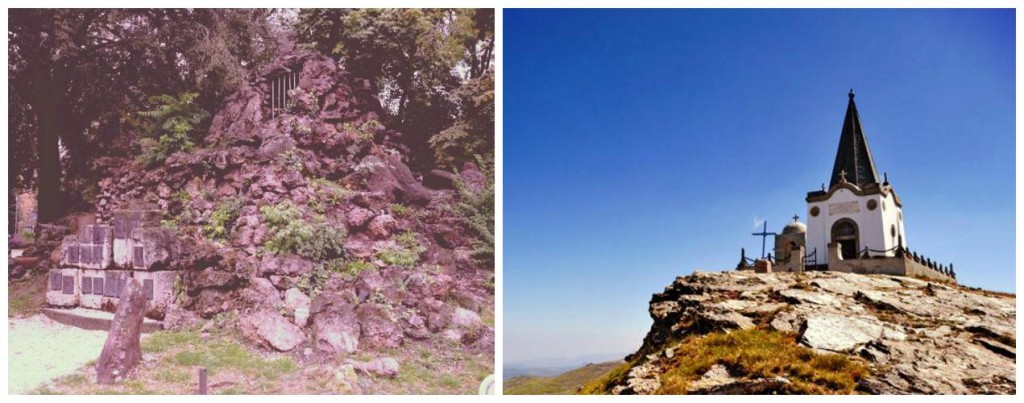
During the 1916, the recuperated army of the Kingdom of Serbia began its advance through Thessaloníki Front, towards the occupied fatherland. Advancing rapidly, the First Army led by Duke Zhivojin Misic encountered great resistance at Kaymakchalan, the highest peak on the mountain wreath of Nidza. The Axis forces, mainly consisting of Bulgarians, dug in at the St Iliya Peak and defended their position for 18 days in a a row. The battle casualties were immense on both sides. The victory in this battle has opened the Kaymakchalan Gate of Freedom on the way to final triumph and became one of the most beautiful sad stories of the Great War.
After the battle, and faithful to the traditions of resistance, spite and Sisyphus work, somebody from the Army’s HQ had an idea how to make a hard task of getting back home, even harder. A stone watchtower, used by the Serbian officers during the battle was loaded onto the ox-cart and taken back home. The rocks from St Iliya peak were then brought to the Royal Garden and stacked again to remind of the original watchtower and to stand a s a reminder of the fallen heroes in the victor’s Capital. during the 1980s the ba reliefs with the images of our own and allied generals were put on it and designated it as a monument, to all those who were unclear what that pile of rubble is all about. Although it seems like the most plausible explanation, the officials have never actually confirmed it. Who knows, maybe its for the best, Otherwise, the modern day Macedonia might ask for its illegally expropriated piece of territory back, and we’d lose a city monument in the process.
Down the potholed paths for a tea at Ivo’s
In the parks grounds, behind the Kaymakchalan watchtower, one encounters the People’s Fountain, built to honor the 1952 Congress of the Communist Party of Yugoslavia. The well known social-realist manner, with straight lines and simple forms, it isn’t particularly nice, but it;s useful as it’s got drinking water. It is after her that we meet one of the most famous Belgrade fountains, A girl with a ewer.
The sculpture dates back to times of the Royal garden, but the author remains unknown. It was renovated in 2011, and in our humble opinion previous looks of the fountain, made out of simple stone were far more appealing than the gaudy red granite which stands there today. It may be safer for kids but, what’s done is done, and things aren’t that ugly the way they are. Although the reconstruction plan of the whole park was done by the professors at the faculty of Forestry in 2007, the immediate reconstruction has been being announced since 2008 on a regular basis. The asphalt path and the lights are in pretty bad condition, but they bear, at least to some of us, the charm of the past decades. The only real nuisance is the risk of injury as many cracks and potholes have been skilfully camouflaged, so they can and do surprise oblivious pedestrians.
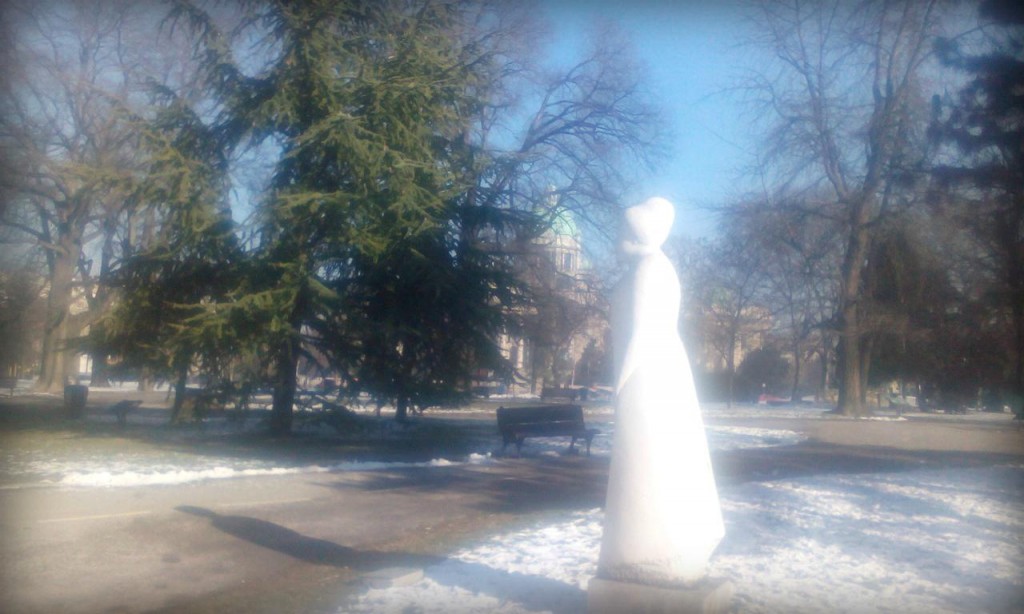
Moving away from the Girl with a ewer towards the president’s quarters, you will walk past another monument, built to honour the most important Serbian paintress of the 20th century, Nadežda Petrovich. Down, just under the New Court, is another token of appreciation to another cultural colossus, Mr Ivo Andric, who gazes thoughtfully towards King Milan Street. The monument stands there for a reason, as does the name Andrich’s Wreath, given to the whole little passageway. The only Nobel Laureate from the Balkans, has long been President’s first neighbour, in the modest flat of building number 8, which is right at the corner. The apartment looks just as he left it, because soon after his death, it was turned into a memorial museum.
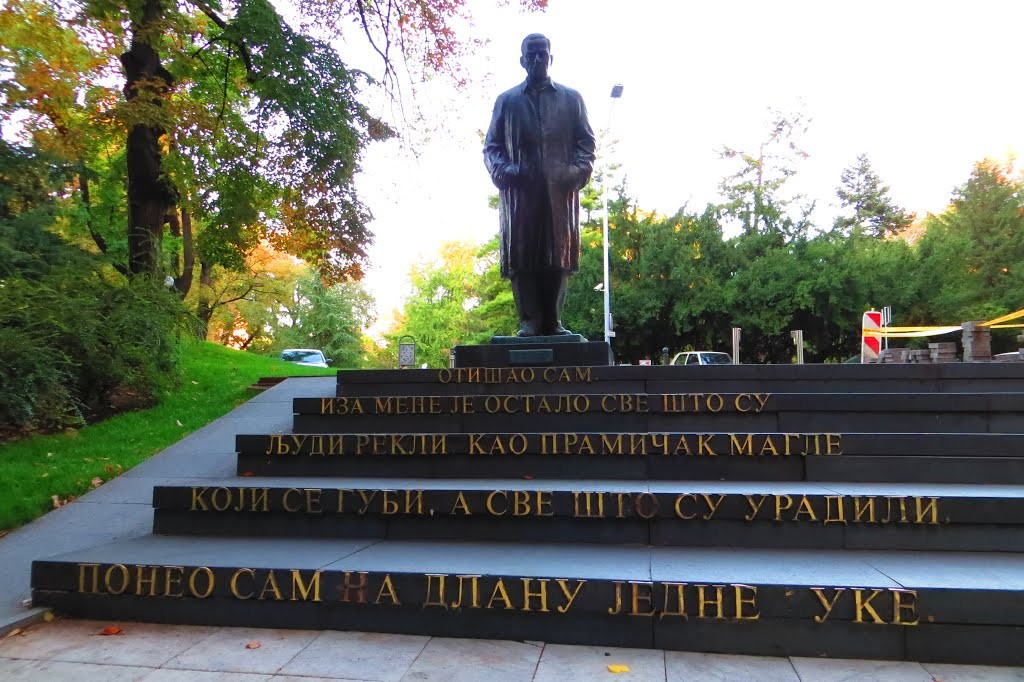
Century old foliage as a storm shelter
And so it stands, the Pioneers Park. And in it, stand we, in the middle of the urban jungle. It stands, observes us for longer than a century as a silent witness to millions of lives. It had no choice as to where it would be borne, just like none of us did. So it was left to grow, in the noise, smog and the proverbially turbulent history of Belgrade. It stands tall, however, and proud, looking forward to the future encounters it will have with those who will tread its paths.
Well, let us hope that those encounters will bring more grandparents with their grandchildren, pets, love birds and celebrations, and less of angry mobs, coups, invaders and busy politicians.
If it’s well, we’ll also be well. May it have a long and peaceful life, because it’s high time that we should rest together with it. Every man and every park long for a bit of boredom from time to time.
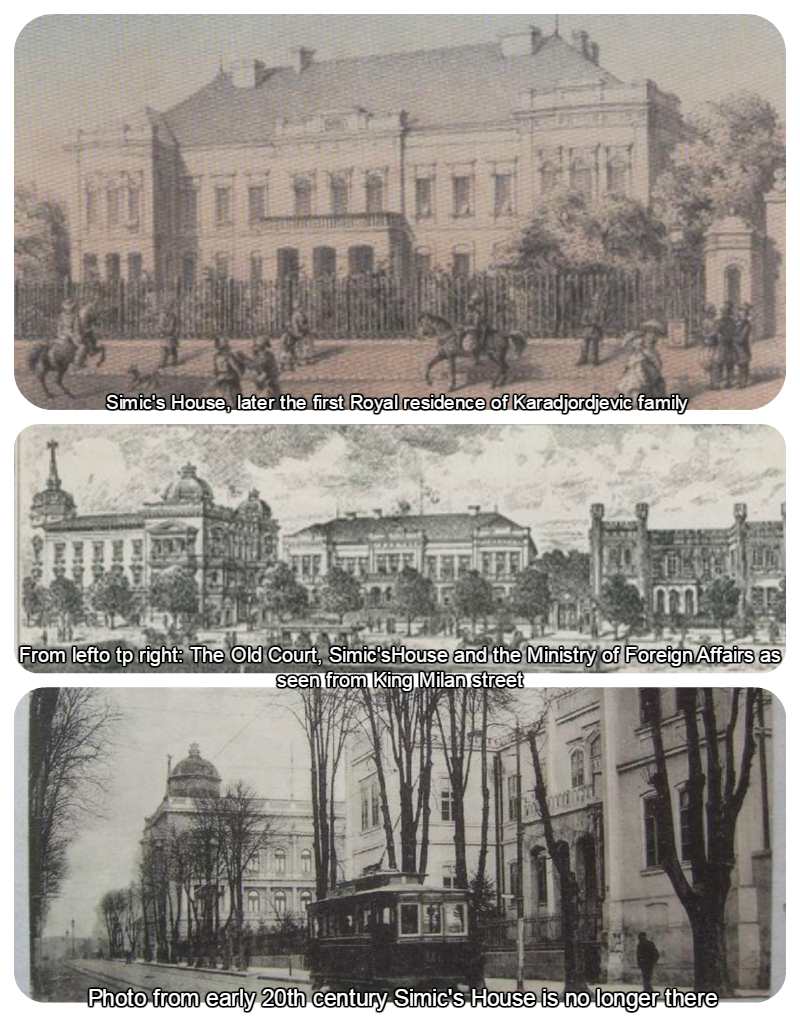
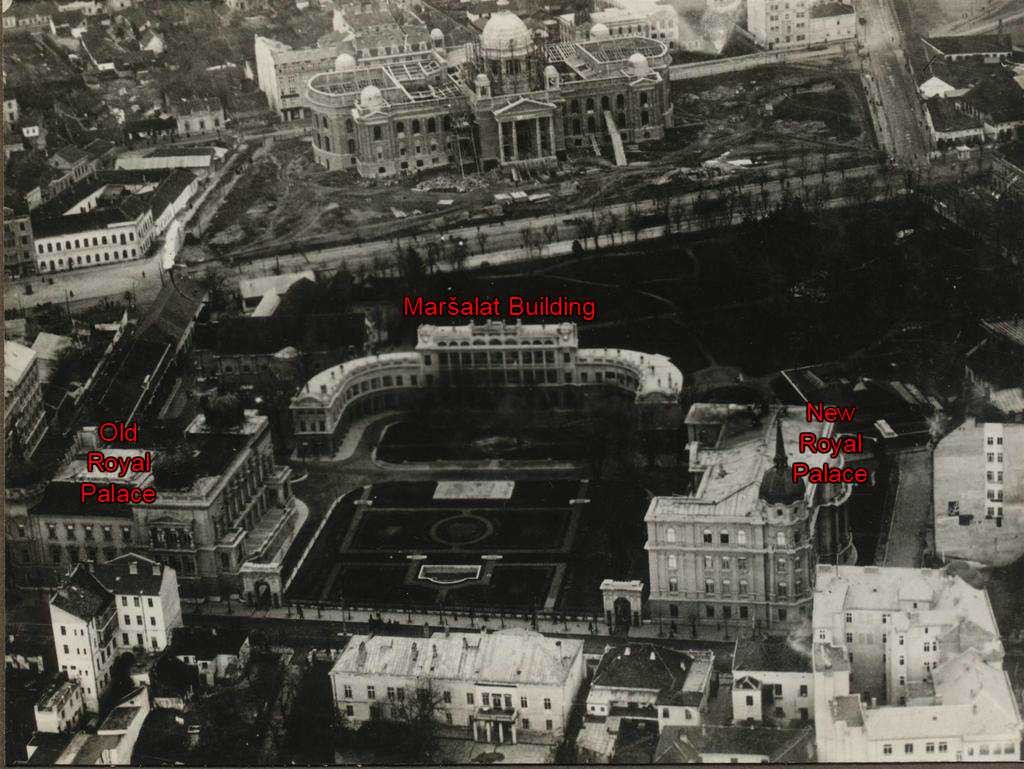
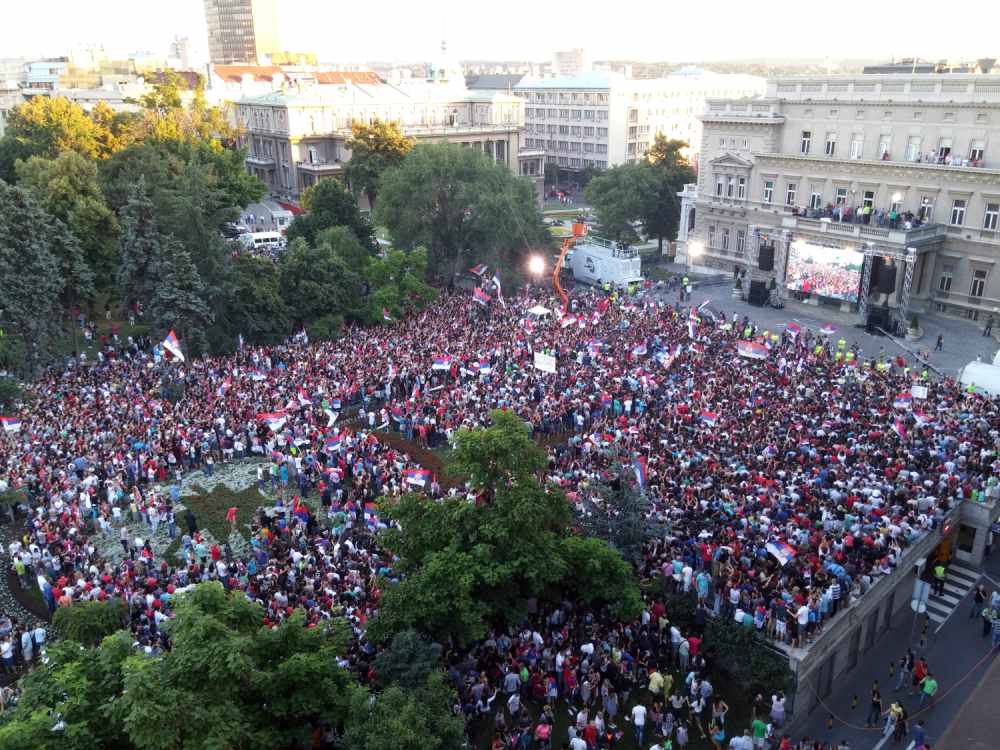
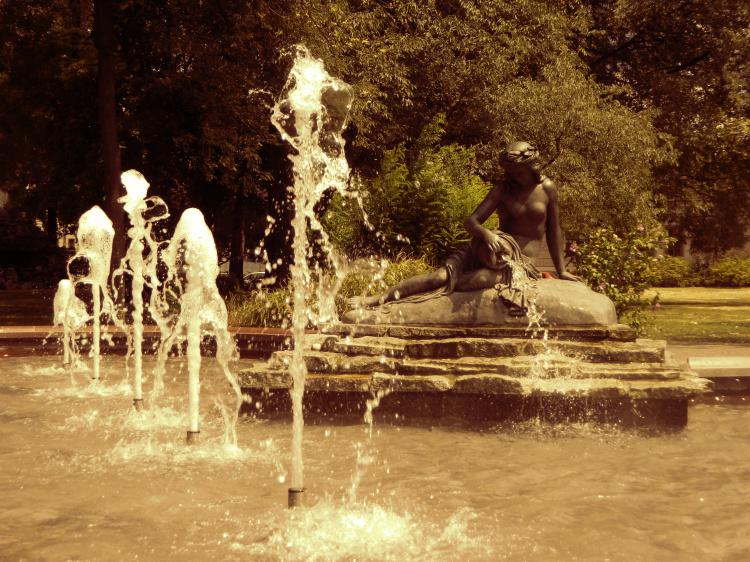
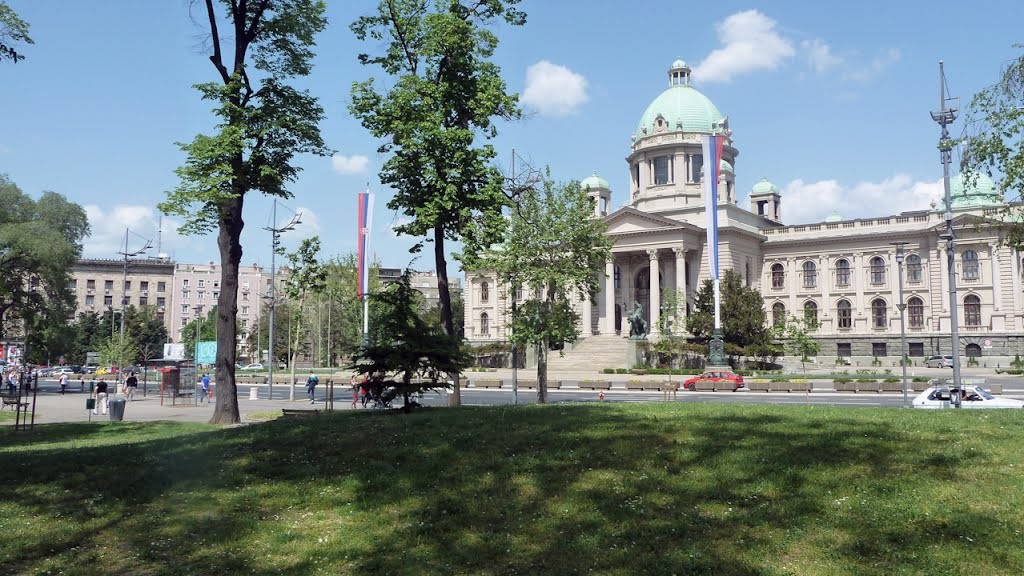
Be First to Comment